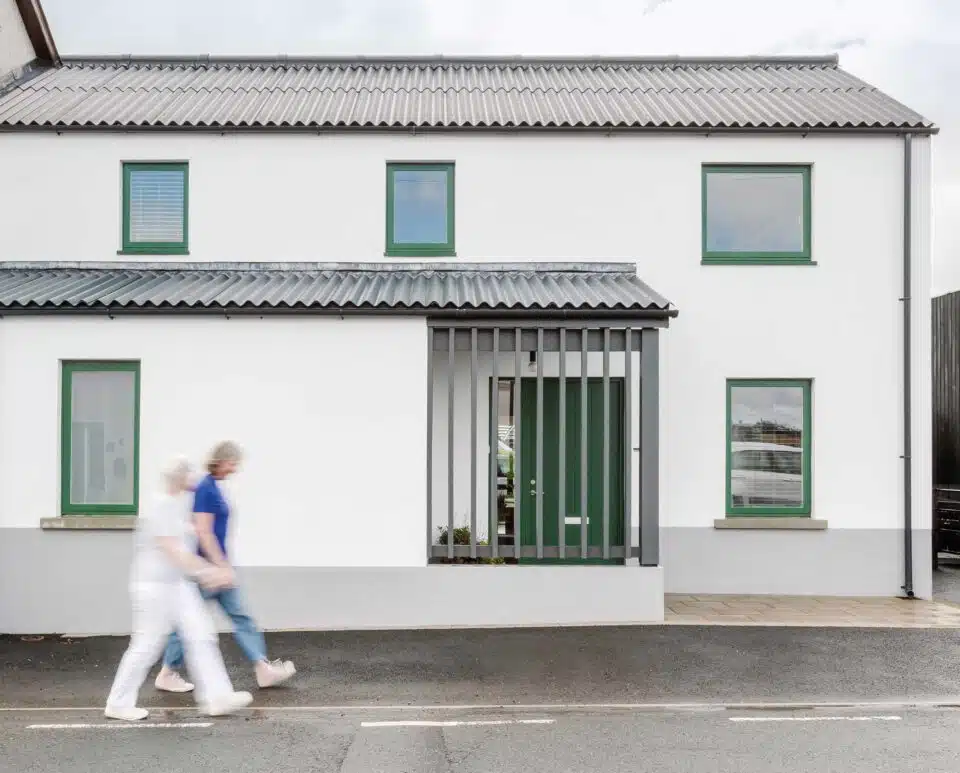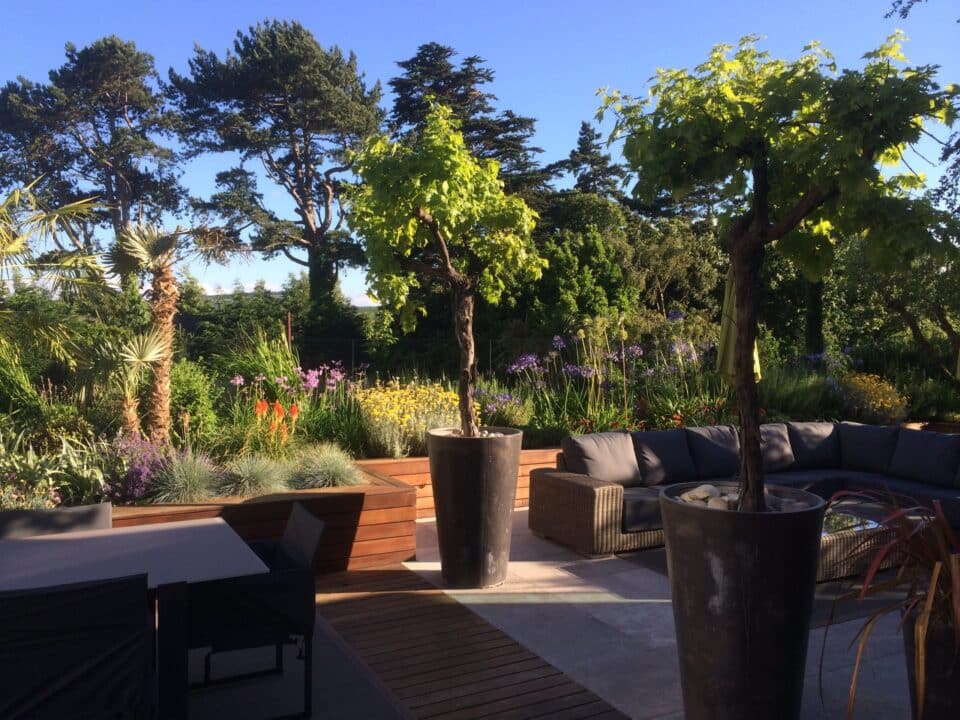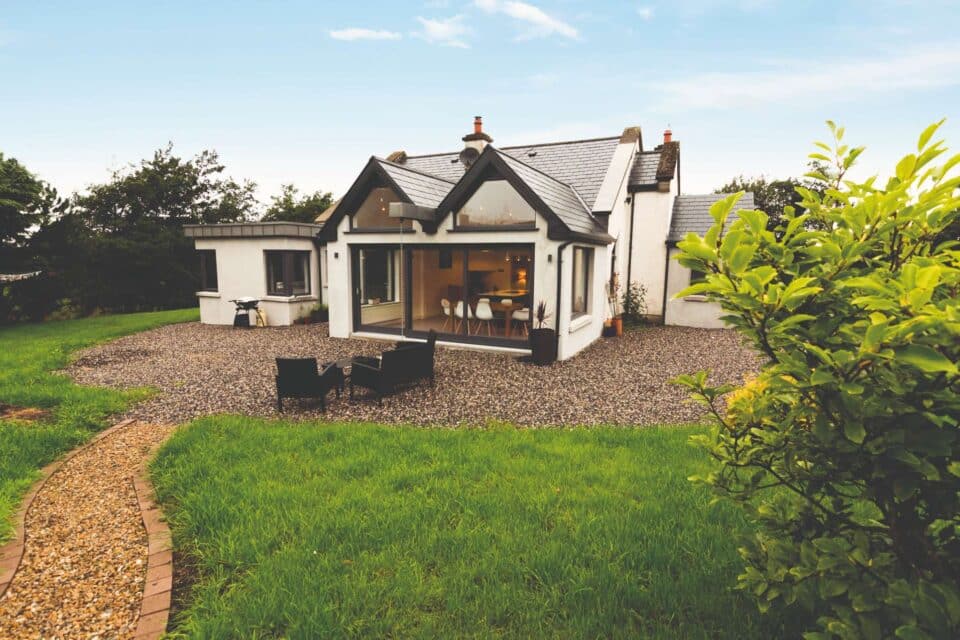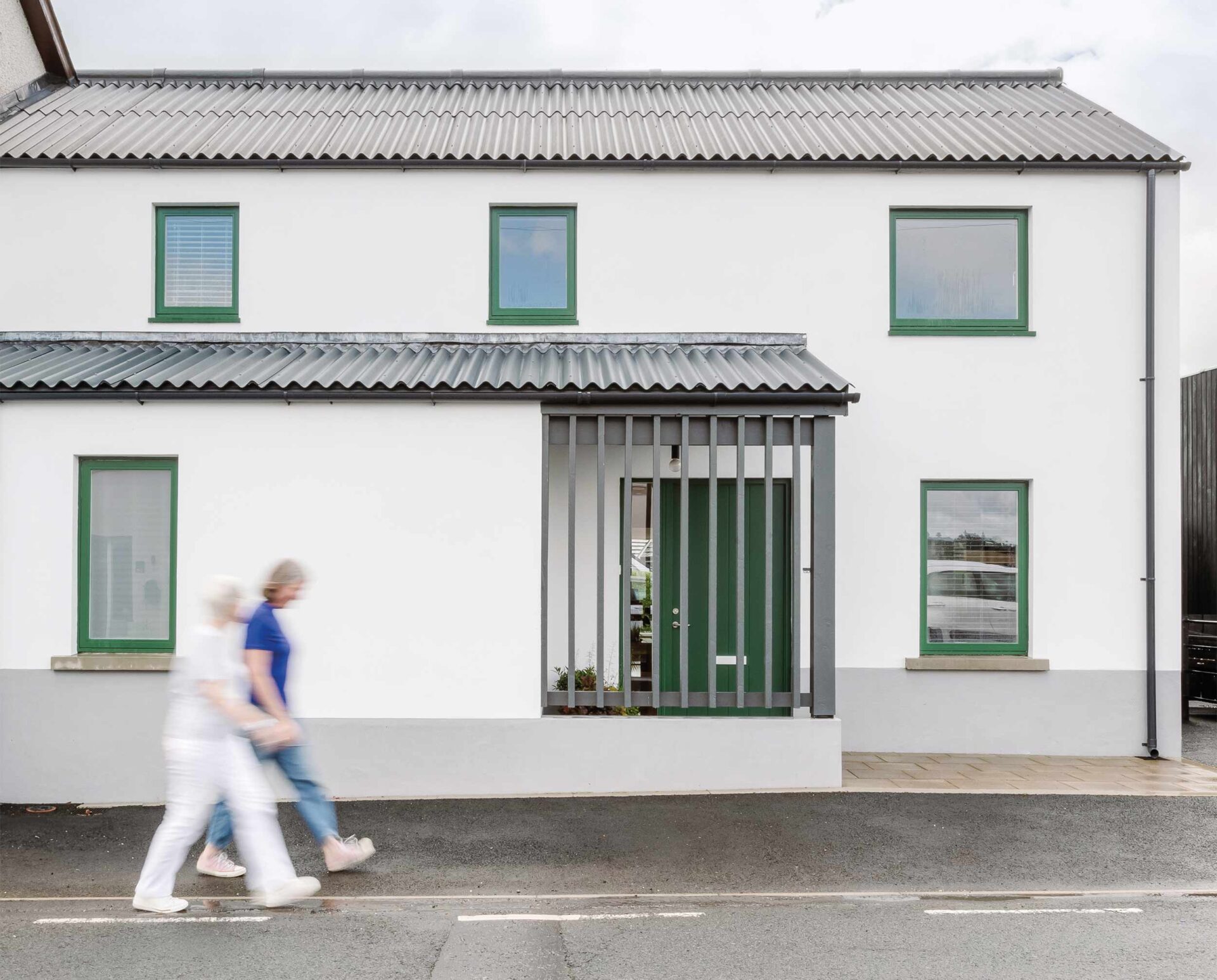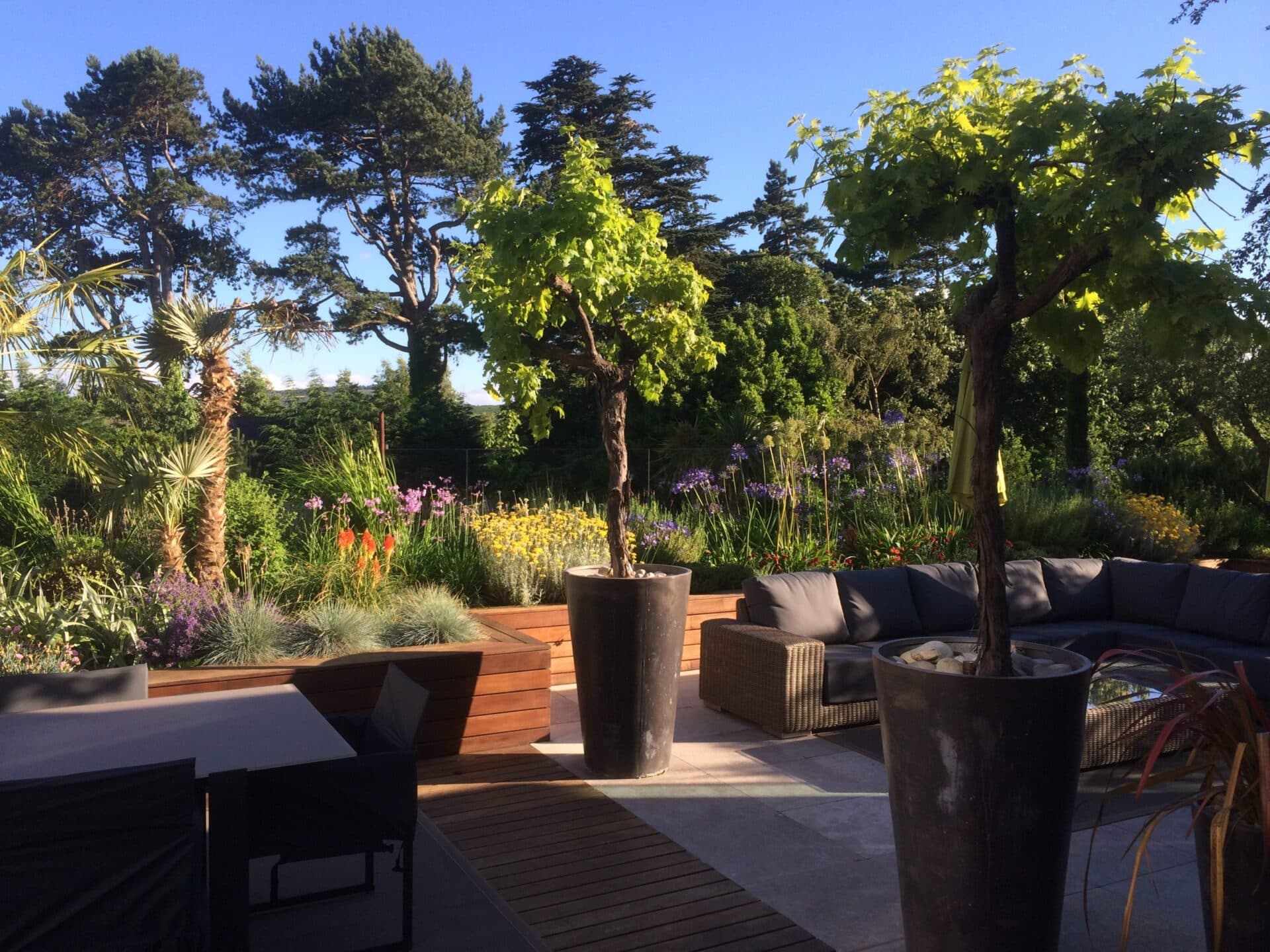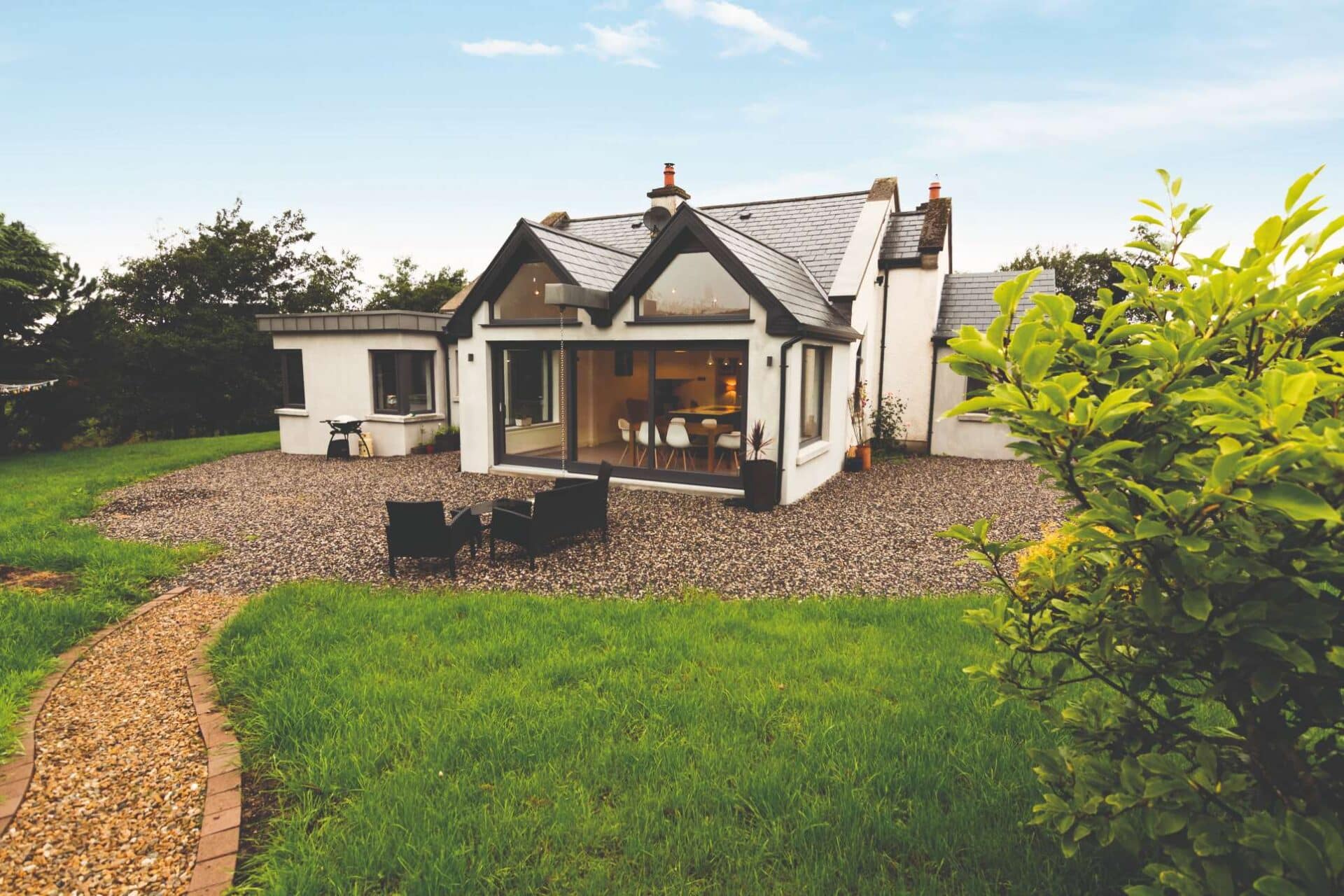In this article, Harrison and Erin cover:
- Benefits of self-building over buying an existing house
- Why and how a self-build will save you money
- Why the current model of house buying is not working
- What the self-build revival looks like in Ireland today
- The need to rethink our choice of materials and practices
- How to work with regulatory pressures from Building Control and product certification
- How to make a DIY self-build work for you
- Buy a tiny home or make your own
Access to home ownership used to be as simple as following a tried and tested recipe. Firstly, you would combine all of your dry ingredients together: a well paying job with a reputable employer, a strong credit history, possibly a nuclear family and a freshly pressed shirt.
Next, you would add in your wet ingredients: no outstanding debt, a seemingly perpetual salary with benefits, and access to a little family inheritance, just in case. Fold it all together, pour into a tin, bake for 25 to 30 years and you have created one of your basic survival needs. A home.
The reality is that this home ownership recipe of our parents’ generation does not fit our current context. It is little more than a tantalising mirage for most hopeful home buyers and builders of today.
In a time where remote working, freelance self-employment and entrepreneurship is considered normal, where the shape of families and partnerships cannot be defined by a tick box, and where the average price of housing and rent has risen disproportionately to the inflation of average incomes, we need to reassess our methods and means for determining which members of our community are eligible for housing security through the possibility of loans and mortgages.
Self-build revival

Redesigning our current lending system is clearly outside of our remit, but it’s worth reminding prospective homeowners that building, mending and maintaining our homes was standard practice just a couple of generations ago.
Homes were built by their owners and neighbours and in Ireland, this way of pulling together and skill sharing is immortalised in the spirit of meitheal.
Our social enterprise Common Knowledge was founded on the same principle, and to date we shared with over 600 novice owner-builders the skill, knowledge and community required to successfully achieve a self-built home.
The mortgages our salaries qualify us for are a fraction of what they used to be. And there is a harsh reality in the fact that the majority of houses we could afford to buy with these limited mortgages are usually going to require extensive renovation work to get them to a liveable stage.

The reality for a lot of people looking to create their forever homes right now is that they would require an equal sized additional mortgage to bring them up to a comfortable living standard. For so many, that is simply not an option.
And so we see more and more people make the transition from home buyers to home builders, as they take their renovation and reclamation projects into their own hands.
The combined pressure of trying to secure the salary to qualify for the mortgage to have access to the home which we will have little to no time to spend in, is causing a wave of owner-builders to take on their own budgets, material and contractor choices and treading a new path toward security of shelter for themselves, and the next generation.
Whether it’s a new build, an extension, a collaboration or a restoration, this is just the beginning of the self-build revival.
Prioritising your values

The first, and perhaps most recurring challenge which accompanies the self-build process is the relentless pressure to make decisions, when there is often a plethora of options to consider and very few clear answers.
All of the possibilities and variations can feel overwhelming at times, and understandably lead many new navigators of this path straight to an architect’s office, in the hope they can hand this confusion off to someone more experienced. All for a price.
Willing to feel uncomfortable in a landscape of endless options is a vital first step of the owner-builder journey. Whilst the motivation to self-build is likely most commonly driven by budget restrictions or a lack of finances, one of the many knock on effects of building your own home is the opportunity to take an increased responsibility for your decisions and the impact those decisions will have.
It may seem obvious to place quality, cost and speed as equal, top priorities when approaching your project. Unfortunately, it is just not that simple. There are a multitude of other factors to consider when deciding what to build our homes with today.
We now have to weigh in the carbon impact of our chosen materials, as well as the impact of transporting these materials to the construction site, the potential volatile organic compounds (VOCs) which could be emitted into our living environment, and this is to name just a few of the environmental concerns of a material.
Costs will be affected accordingly and sustainable and natural materials, while being less energy intensive to produce, usually cost more than their heavy carbon producing counterparts and can heavily impact your budget.

We live in a rapidly changing world with ever evolving values which apply to us, both as individuals and also as a society. While there is no shortage of advisors out there to tell you how to approach your project, the reality is that every person’s values and adjoining priorities will differ.
You may be able to justify the extra expense to ensure you don’t have any harmful VOCs leaching into your living space. But the leap in price for fully natural insulation might be unrealistic for you.
These decisions can be difficult to make, and no one else can make them for you because no one else’s priorities are going to precisely line up with your own. And in the end it is you who will live with the repercussions of the decisions made.
The important piece to come to terms with here is that you will have to compromise on some of your principles when building on a budget. And it is worth weighing up your priorities before you start researching options.
It is down to the individual to work out what is important for them. Express your needs clearly when gaining advice from those with more experience, whether they are your neighbours, family members or industry professionals, so that they can guide you towards the right choices for the home you are trying to create.
Working with Building Control Regulations

It is worth mentioning that, in the ever evolving landscape of the construction industry, not every question has an answer yet. There is a steady stream of new materials being continually brought to market, while other people are working hard to certify building materials and techniques we have actually been using for centuries.
On the consumer end, we often hear about material innovations and releases long before those materials have been accredited or certified. This, amongst all the other questions that surround a new owner-builder, can create a lot of confusion around what is allowable, or legal, and what is not, when it comes to building your own home.
The Building Control Regulations 1997 to 2021 require that owners, builders, and construction professionals demonstrate their building works have been designed and constructed in compliance with set standards.
These regulations apply generally to new buildings and to existing buildings which undergo an extension, a material alteration or a material change of use.
As an owner-builder, the construction of your home in ROI is governed under the Building Control Amendments Regulations 2014 (BCAR). Supplementary to this act is the online portal Building Control Management System (BCMS), which allows property owners, builders, developers, architects and engineers to submit notifications, applications and compliance certificates via an online portal.
The BCMS is an ideal place for new owner-builders to understand their roles and responsibilities as well as the role of their contractors, and any professional tradespeople who are involved with the project.

The minimum engagement that a homeowner is obliged to have with Building Control prior to starting their project is to lodge a Commencement of Works application. There are four types of commencement notices and the most common notices to be lodged by self-builders are the Commencement Notices, and the Opt Out Declaration.
The Opt Out Declaration works off the understanding that most owner-builders are sufficiently invested in their projects to ensure that they build to a high, regulation compliant standard. It places the responsibility of the building quality directly on the owner, and thus all due diligence around material sourcing and choices is the responsibility of the owner.
The Declaration greatly reduces the administration costs for owner-builders and has been heavily implemented across the country since it was created in 2015. However, the freedom the opt out clause allows can become a burden if the responsibility is taken too lightly – as the act suggests, your heavy financial investment is at stake if you do not do your research.
Building skills and concepts are intuitive for the vast majority of people, there can still exist a steep learning curve for the first time owner-builder, and the process should be approached with a combination of diligence, research and a willingness to learn.
Editor’s note: Unlike the situation in ROI or in mainland UK, in NI building control takes a hands on approach. There are two steps involved: you will first have to get them to approve your construction drawings. Then you will need to notify them that construction is starting, and they will come inspect the site at the key building stages.
Investing in skills over products

One of the greatest gifts of designing your own home is that you can create a space that fits around your unique lifestyle rather than adapting, compressing and squeezing your lifestyle into the shape of your shelter.
A home should be a place you feel safe, a place you feel open and most importantly, a place where you can grow. You are not creating a static object, but an ever evolving shelter, which will need to adapt with you, as your life changes, then changes again.
Other than sourcing free materials, the most effective way to save money on your build is to invest in your own skillset, so you can take on more of the work yourself. You may only build one home in your lifetime so why not allow the process to be as enjoyable as possible.
Allocate sufficient time and energy into learning the new skills you need to feel empowered and involved in the project. Allow yourself room to improve the mastering of a new skill. Everyone starts somewhere and most tasks on a building site are repetitive ones so you will have lots of time to practise and perfect as you work. Look to your community for advice, materials, ideas and approaches.
Like all rewarding things in life, building your own home is a daunting adventure for the uninitiated. Take it slow, do your research, ask questions, listen to all the differing opinions and ideas. And then apply them to your own set of priorities to find the fit that is right for you.
This time of housing pressure could be the perfect moment to resurrect the joy and creativity that building your own can bring.

All photography in this article by Shantanu Starick
How to get your own home built
Our Common Knowledge offers courses to prospective self-builders: full list of courses here.
The team also has tiny homes on wheels for sale. The Tigín is the size of a large caravan built from natural materials that include Margent Farm‘s corrugated hemp cladding panels, cork insulation and natural rubber linoleum floor tiles. It can be moved in 10 minutes.
The 20 sqm micro homes can be bought for €48k with timber cladding, €50k metal cladding, €58k hemp cladding.



